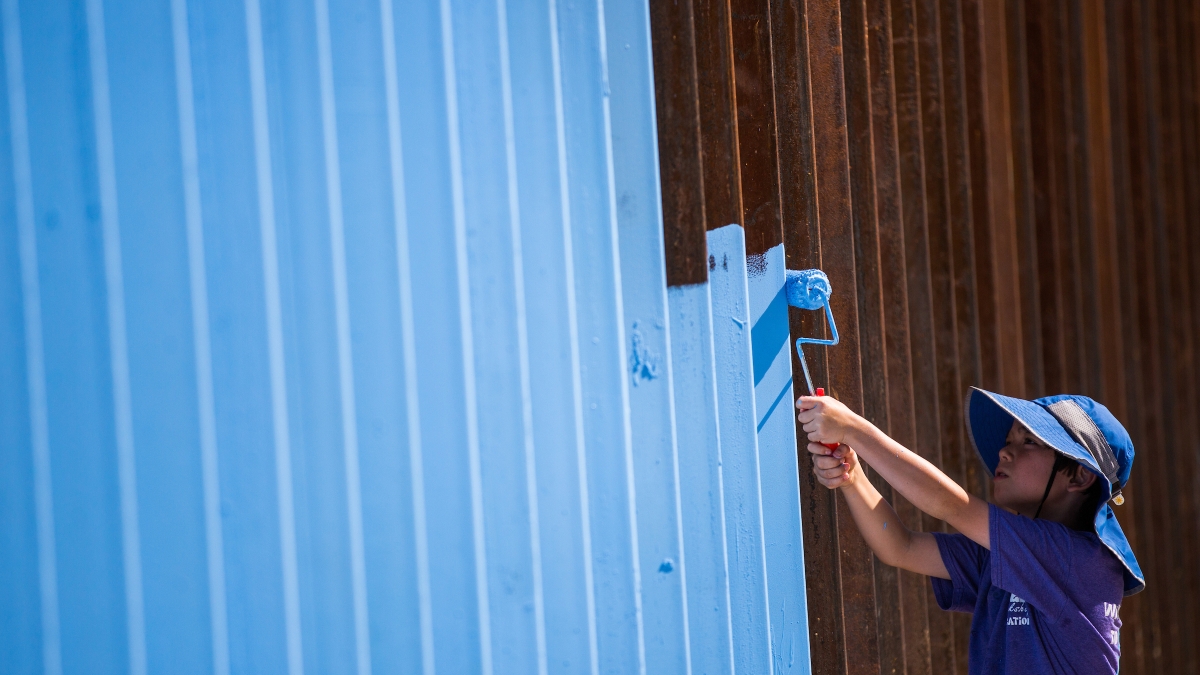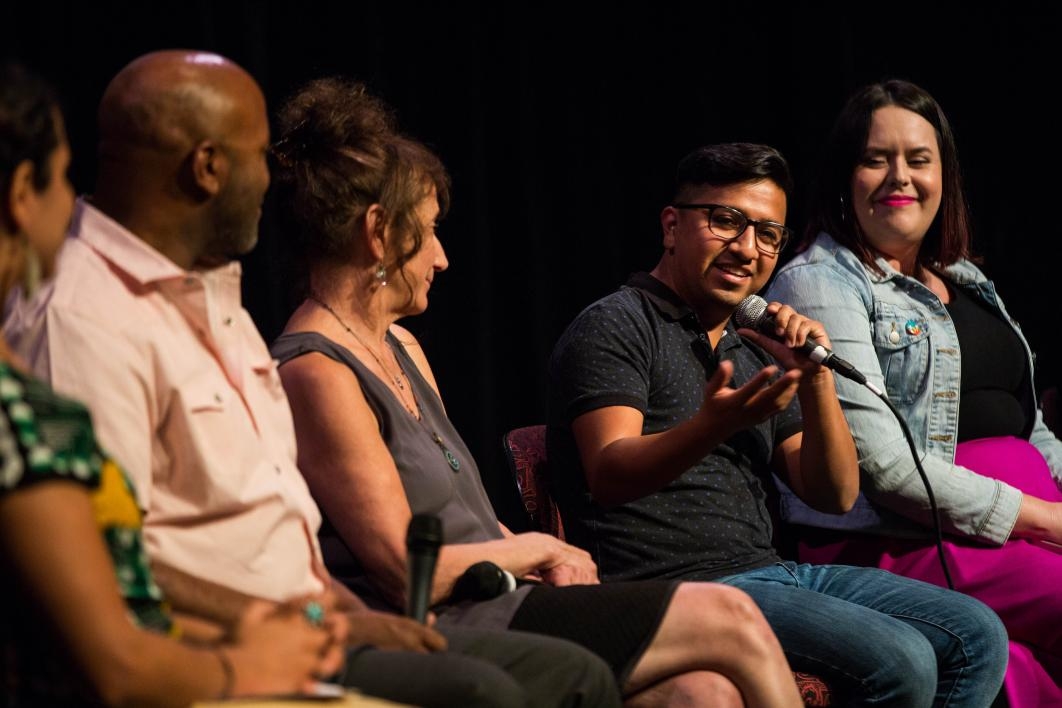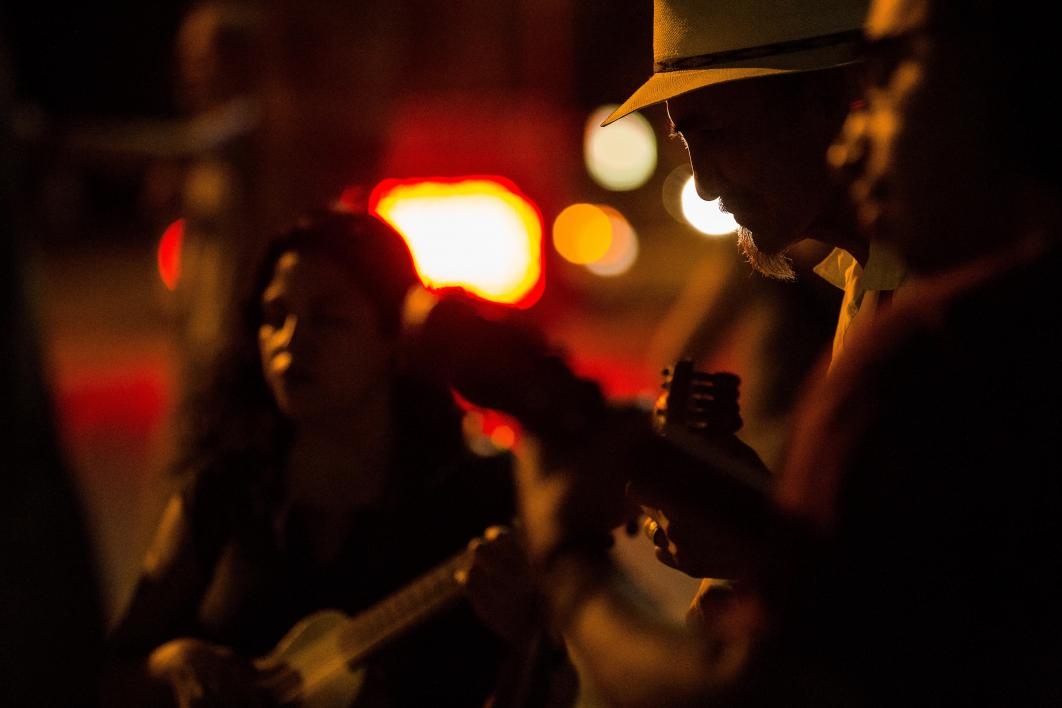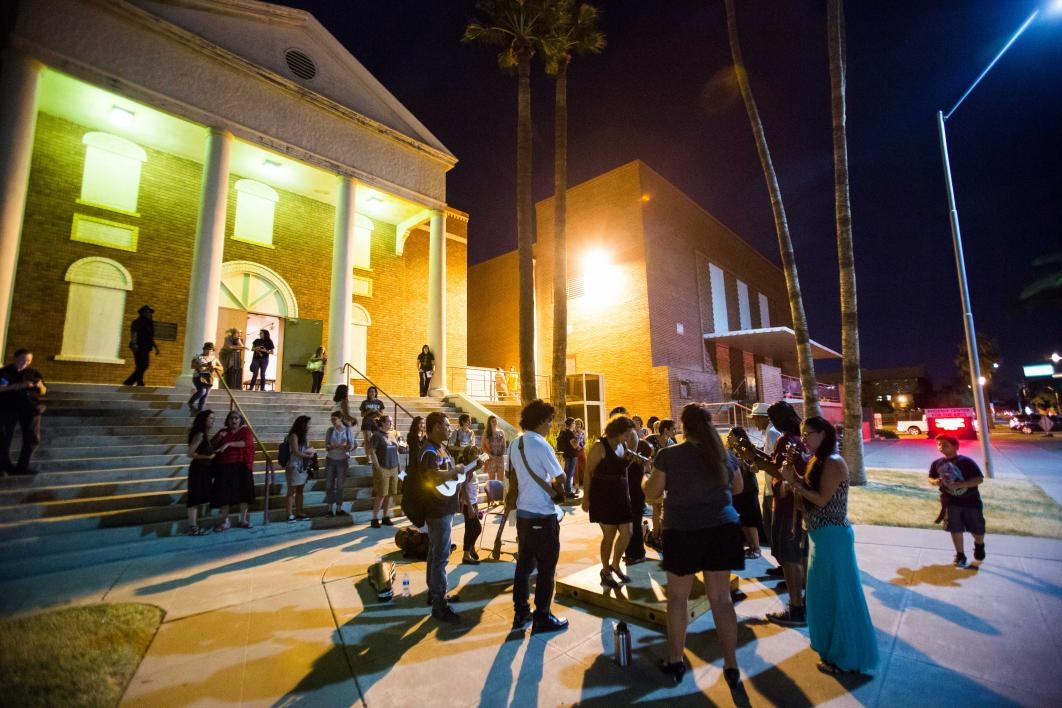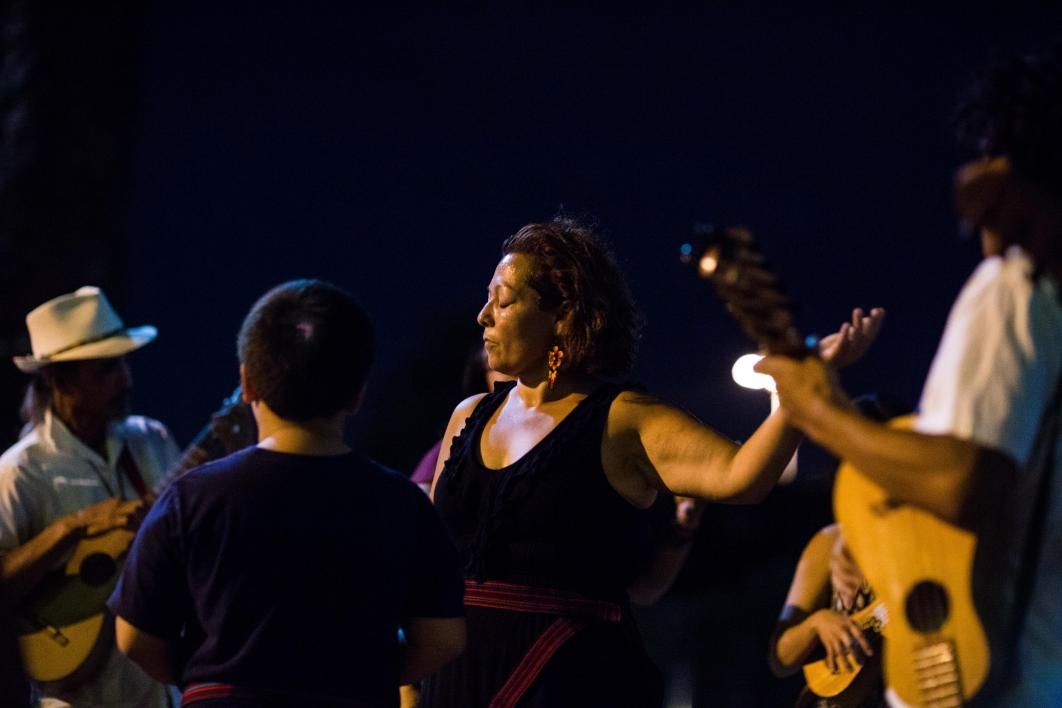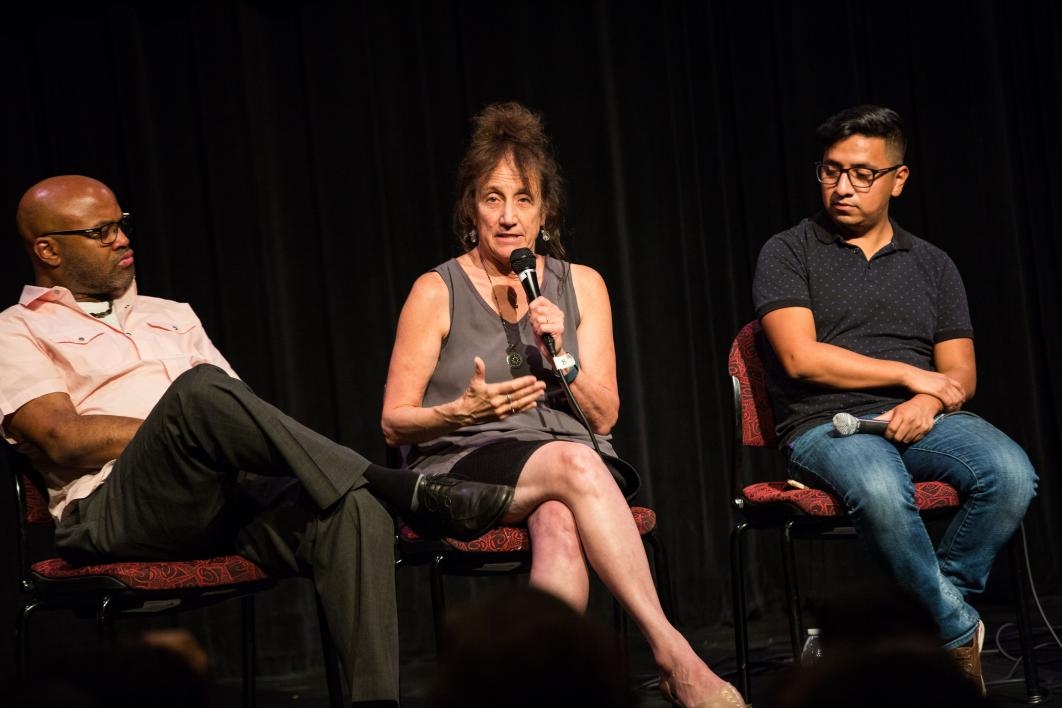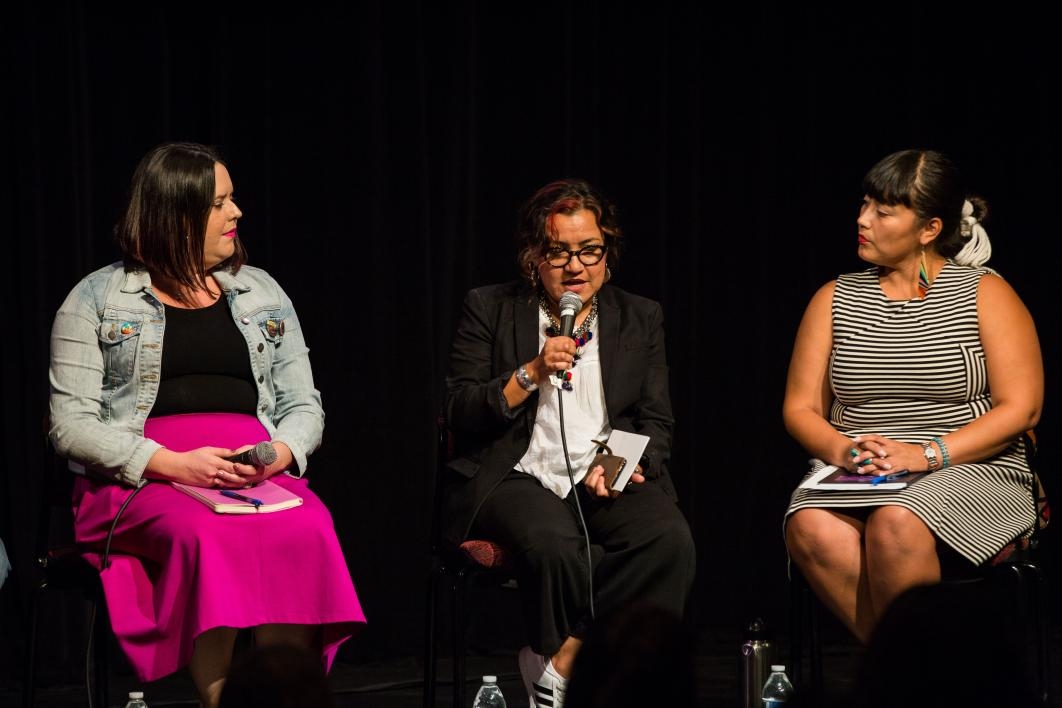In the coming weeks and months, desolate sections near the U.S.-Mexico line will transform into arthouses, theaters and classrooms as Arizona State University brings together a collection of artists to focus their talents on borderland issues.
An initiative of the Herberger Institute for Design and the Arts’ School of Film, Dance and Theatre, the 13th season of “Performance in the Borderlands” got underway Tuesday with a panel of prominent artists discussing the works’ scope, impact and potential to drive social and political change.
The planned plays, installations and workshops are part of ASU’s cross-disciplinary approach to expanding access, addressing problems and taking responsibility for the well-being of the communities it serves. ASU Now will follow the initiative to document the ways it engages the region and its people.
“We think of borders not just in terms of the physical demographic of a wall in southern Arizona, but in terms of these complicated identity issues and structures,” said Mary Stephens, producing director for “Performance in the Borderlands.”
“Our approach is to think of the borderlands as a conceptual space where people are meeting, ideas are exchanged and as a methodology for life. Really good art takes your everyday perceptions and kind of twists it so that you can see it in a different way.”
As it has done since 2003, the art series will bring together local, national and international artists, ensembles and theater groups. Past invitees have been from Arizona, California, Mexico, Peru and Argentina, and their work has explored topics including immigration, social justice, race, religion, sexual orientation and women’s rights.
Memorable borderlands installations have included a play in the Desert Valley Rock Center reserve, a queer Chicana monologue on body image and politics, and a mural that momentarily erased the border in Douglas, Arizona.
"We've had so much positive response," Stephens said. She said the project aims to support the work of artists and and leaders in the communities they serve, adding "It's not only been positive, but catalytic because ASU is able to fund artists that these small communities could not normally afford and work with these communities, so they're able to produce an event with an incredible artist of great caliber."
This year’s theme, “Voices of Power,” examines the role of women of color in the arts and social justice. “My job as curator is to give these amazing women visibility because they’re not just part of, but leading the arts movement in Arizona,” Stephens said.
Martha Gonzalez, a Grammy-winning artist, activist, scholar and the current ASU Gammage guest residency artist, is contributing to the borderlands project as a featured speaker at the introductory discussion.
Martha Gonzalez
She sees the connection between art and social consciousness as inextricable. Through workshops and her Mexican folk band, Quetzal, Gonzalez has engaged communities in critical thought through music. At the same time, she has increased access to health care and educational programs for underserved populations in the Los Angeles area.
“With hypercapitalism as the way we understand it, we tend to think of art as something separate from community and something we buy and sell,” Gonzales said. “Art has always been meant to document and instigate critical thought and bring communities together.”
This year’s borderlands project will include close to 20 activities that will run through May.
The first event of the season included ASU professors Marlon Bailey and Liz Lerman along with Gonzalez. Speakers discussed the creative process, community representation and — as Gonzalez put it — developing a sense of "convivencia," or coexistence.
"It means to be with each other," Gonzalez said, "deliberate presence to each other, commitment to each other, dialogue through this art and music. I think that it's extremely important for us as well to instill a sense of 'convivencia' through music and our practices."
The rest of the season's lineup features Arizona artists Raji Ganesan, Rashaad Thomas, Leah Marche and Liliana Gomez.
Projects are expected to include an on-site installation and performance at the Rio Salado Habitat Restoration Area in Phoenix; a DJ scholarship and music activism lecture with Lynee Denise and a bi-national arts residency with solo performance artist Yadira de la Riva, who will travel through Arizona, northern Mexico, the Tohono O’odham Nation and the Sonoran Desert.
“I feel this is our strongest year because we’ll be working with and reaching many communities, especially women,” Stephens said.
For a list of complete listing of the 2016-2017 season, go here.
Top photo: Last year's "Performance in the Borderlands" included painting the U.S.-Mexico border fence to match the sky. Project leaders said it removed an oppressive visual barrier to help create optimism. Photo by Deanna Dent/ASU Now
More Arts, humanities and education

ASU professor, alum named Yamaha '40 Under 40' outstanding music educators
A music career conference that connects college students with such industry leaders as Timbaland. A K–12 program that incorporates technology into music so that students are using digital tools to…

ASU's Poitier Film School to host master classes, screening series with visionary filmmakers
Rodrigo Reyes, the acclaimed Mexican American filmmaker and Guggenheim Fellow whose 2022 documentary “Sansón and Me” won the Best Film Award at Sheffield DocFest, has built his career with films that…

Pen Project helps unlock writing talent for incarcerated writers
It’s a typical Monday afternoon and Lance Graham is on his way to the Arizona State Prison in Goodyear.It’s a familiar scene. Graham has been in prison before.“I feel comfortable in prison because of…


